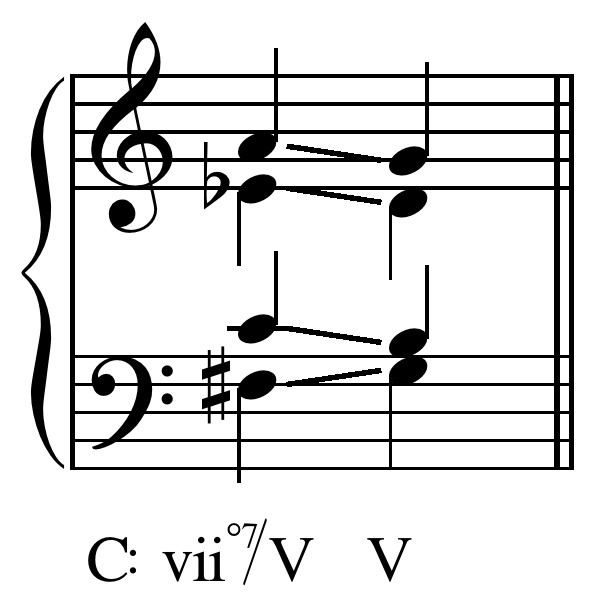 | ||
In music theory, a secondary leading-tone chord or secondary diminished seventh, as in seventh scale degree or leading-tone, is a secondary chord but rather than being a dominant it is a leading-tone seventh chord or triad, which are similar in function to dominant chords. Also similar to secondary dominant chords they are altered chords. In contrast to secondary dominant chords they do not move in circle progressions but rather resolve up by half step. Fully diminished seventh chords are more common than half-diminished seventh chords and one may also find diminished triads [without sevenths].
Secondary leading-tone chords may resolve to either a major or minor diatonic triad:
In major keys: ii, iii, IV, V, vi In minor keys: III, iv, V, VIFor example viiø7/V or viio7/iv. Especially in four-part writing, the seventh should resolve downwards by step and if possible the lower tritone should resolve appropriately, inwards if a diminished fifth and outwards if an augmented fourth.
In harmonic analysis secondary sevenths are expressed in the following format:
where x = the correct inversion symbol [figured bass], and y = the root of the chord of resolution as a Roman numeral.
